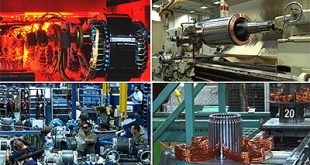Introduction The rapid progress in modern microelectronics has resulted in impressive computational and memory capabilities. However, bridging the gap between digital systems and the physical world has remained a challenge. This is where MicroElectroMechanical Systems (MEMS) and even smaller Nano ElectroMechanical Systems (NEMS) come into play. These technologies integrate sensors …
Read More »From Pieces to Masterpiece: Exploring Image Mosaicing Technology
Introduction: In the world of digital imagery, there is a fascinating technology that can transform ordinary photographs into stunning works of art. Image mosaicing, also known as photo stitching, is a process that involves combining multiple images to create a single, seamless composition. This technology has revolutionized various fields, including …
Read More »Empowering Data Storage: Unveiling the Power of RAID Arrays and Distributed RAID Drives
Introduction: In today’s data-driven world, ensuring data storage that is both reliable and high-performing is essential. RAID (Redundant Array of Independent Disks) technology offers a range of solutions to meet these demands. In this article, we will explore the fascinating world of RAID arrays and delve into the concept of …
Read More »Navigating the Waves of Growth: Exploring the Global Marine Hybrid Propulsion Market and Industry Trends
In a world where sustainability and environmental consciousness have taken center stage, industries are actively seeking innovative solutions to reduce their carbon footprint. The maritime sector, which has historically been associated with significant greenhouse gas emissions, is no exception to this trend. Enter the realm of marine hybrid propulsion – …
Read More »Immersive Audio Unleashed: Exploring the Wonders of Ambisonics
Introduction: In the realm of audio technology, innovation never ceases to amaze us. From mono to stereo, surround sound, and now, we find ourselves immersed in a new era of audio realism with a technology known as Ambisonics. Ambisonics has rapidly gained popularity in recent years, revolutionizing the way we …
Read More »Light Emitting Switches: Illuminating the Future of Control Systems
Introduction: In the realm of electronic devices and control systems, innovation knows no bounds. One such groundbreaking development transforming how we interact with technology is the advent of light-emitting switches. Combining the functionality of traditional switches with the mesmerizing glow of light emission, these switches offer a host of advantages …
Read More »Electric motors technology enabling profound improvements on electric vehicles performance
Introduction The electric vehicle (EV) revolution is in full swing, and at the heart of this transformative shift lies the remarkable evolution of electric motor technology. From their humble beginnings, electric motors have made astonishing progress, driving profound advancements in the performance of electric vehicles. In this article, we’ll delve …
Read More »Unveiling the Evolution of Microphone Technology: From Fundamentals to Cutting-Edge Innovations in Beamforming
Introduction: In today’s fast-paced world, microphone technology has become an integral part of our daily lives. From communication devices to recording studios, microphones play a crucial role in capturing and transmitting audio. Over the years, these humble audio devices have undergone a remarkable evolution, revolutionizing the way we capture sound. …
Read More »Quantum Machine Learning: AI’s New Frontier for Exponential Speedup in Internet Search, Fraud Detection, and Brain Mapping
In recent years, the fields of quantum computing and artificial intelligence (AI) have been advancing at an astonishing pace. While both domains have individually transformed various industries, the convergence of quantum computing and AI has opened up new possibilities and paved the way for a groundbreaking approach known as Quantum …
Read More »Demystifying Electron Beam Lithography: A Revolutionary Nanofabrication Technique
Introduction: In the world of nanofabrication, precision and control are paramount. The ability to manipulate matter at the atomic and molecular scale has opened up a realm of possibilities in various fields, from electronics to medicine. One technique that has been instrumental in pushing the boundaries of nanotechnology is Electron …
Read More » International Defense Security & Technology Your trusted Source for News, Research and Analysis
International Defense Security & Technology Your trusted Source for News, Research and Analysis



